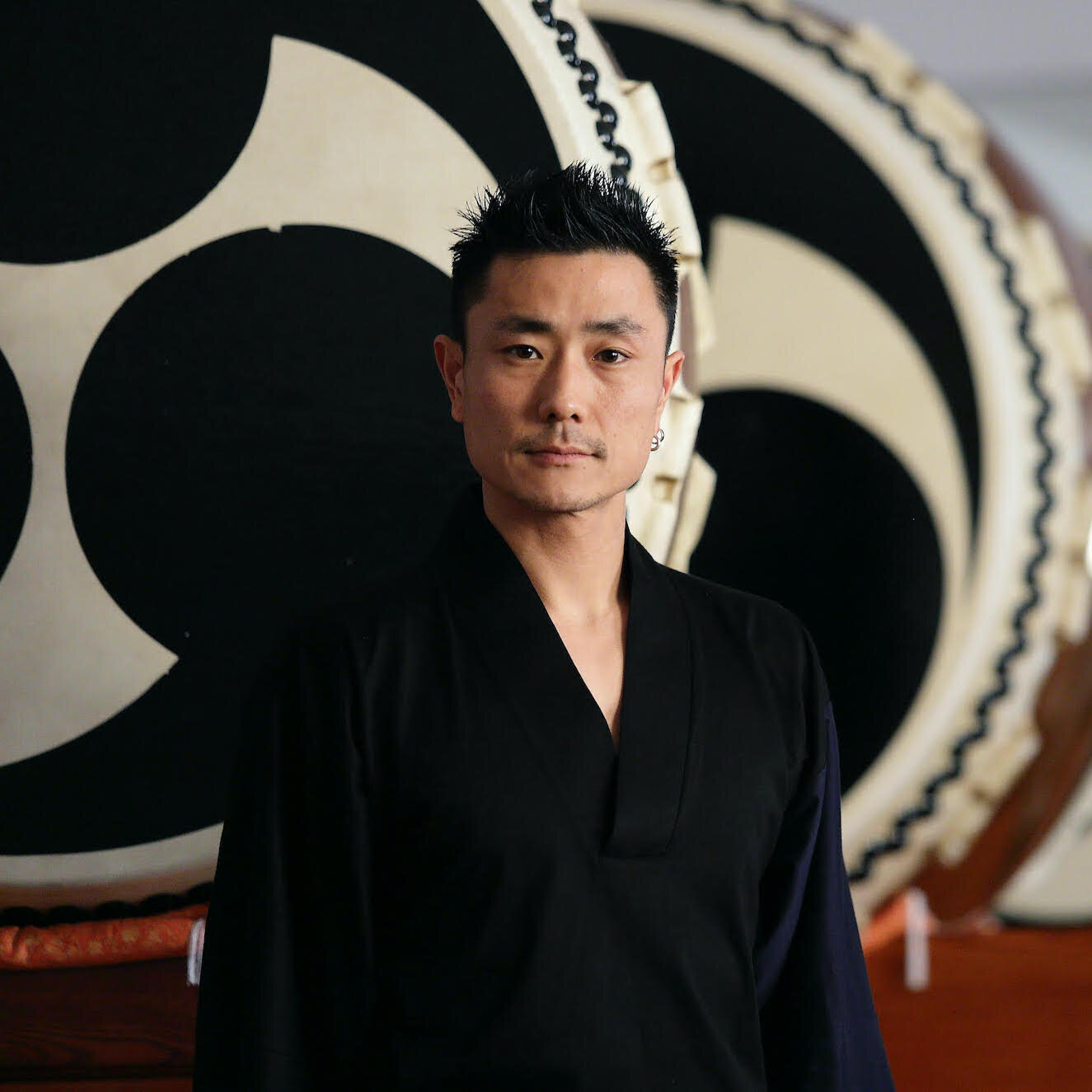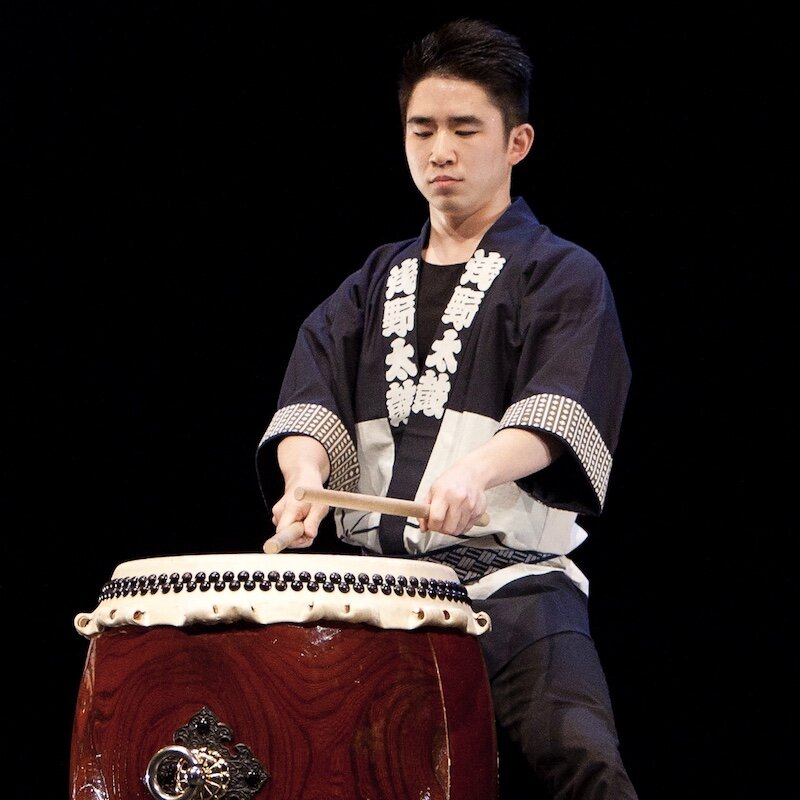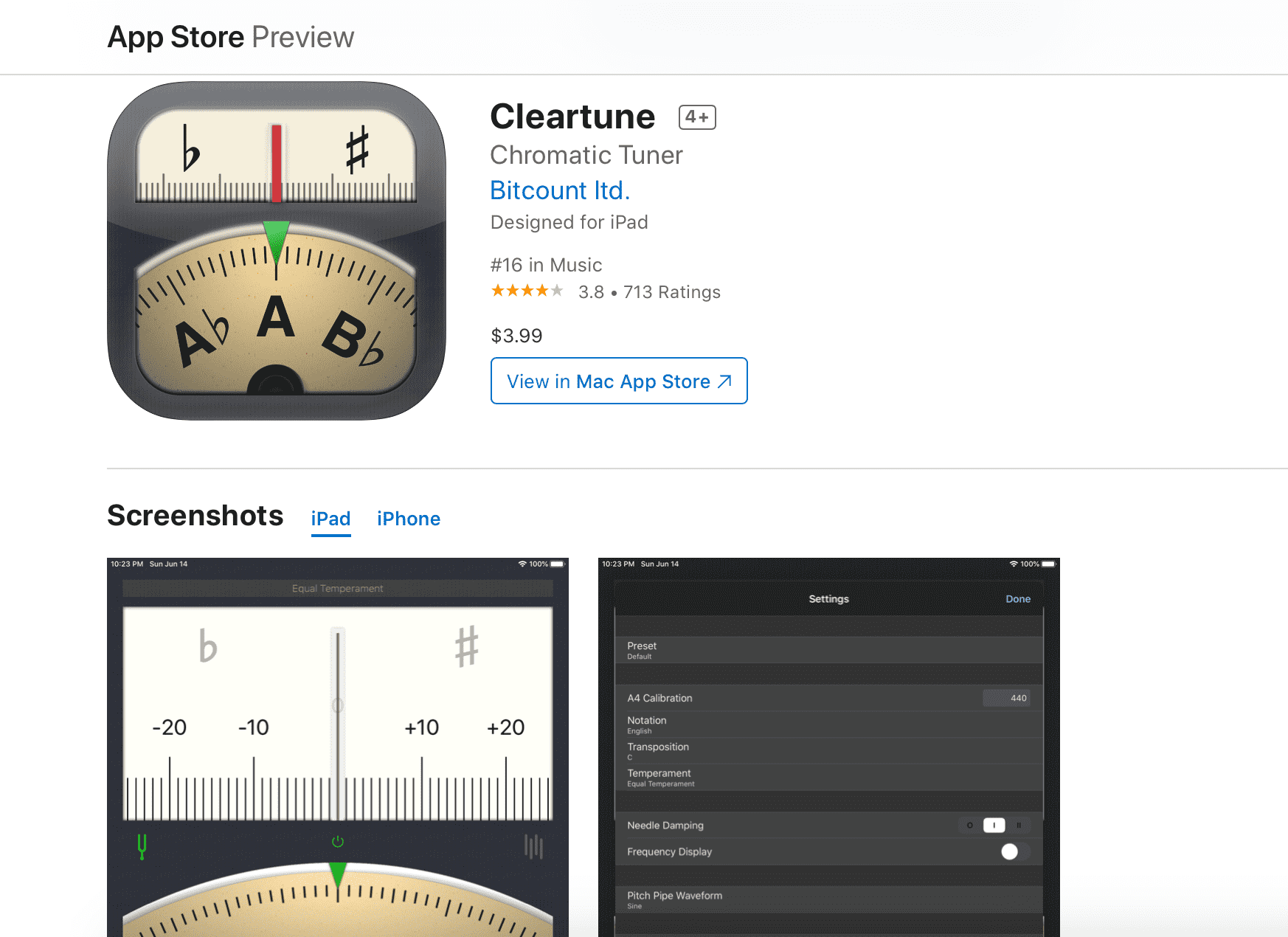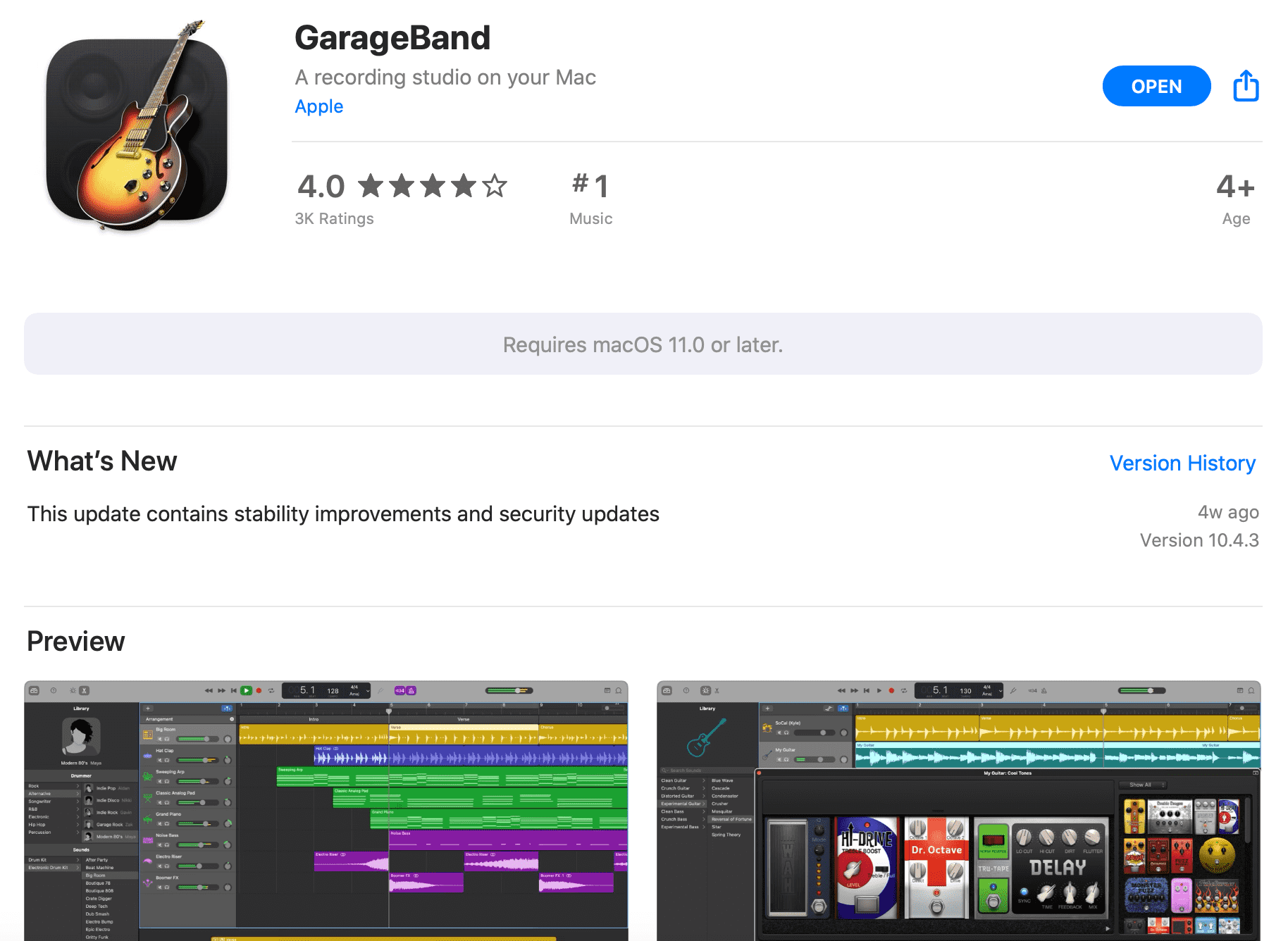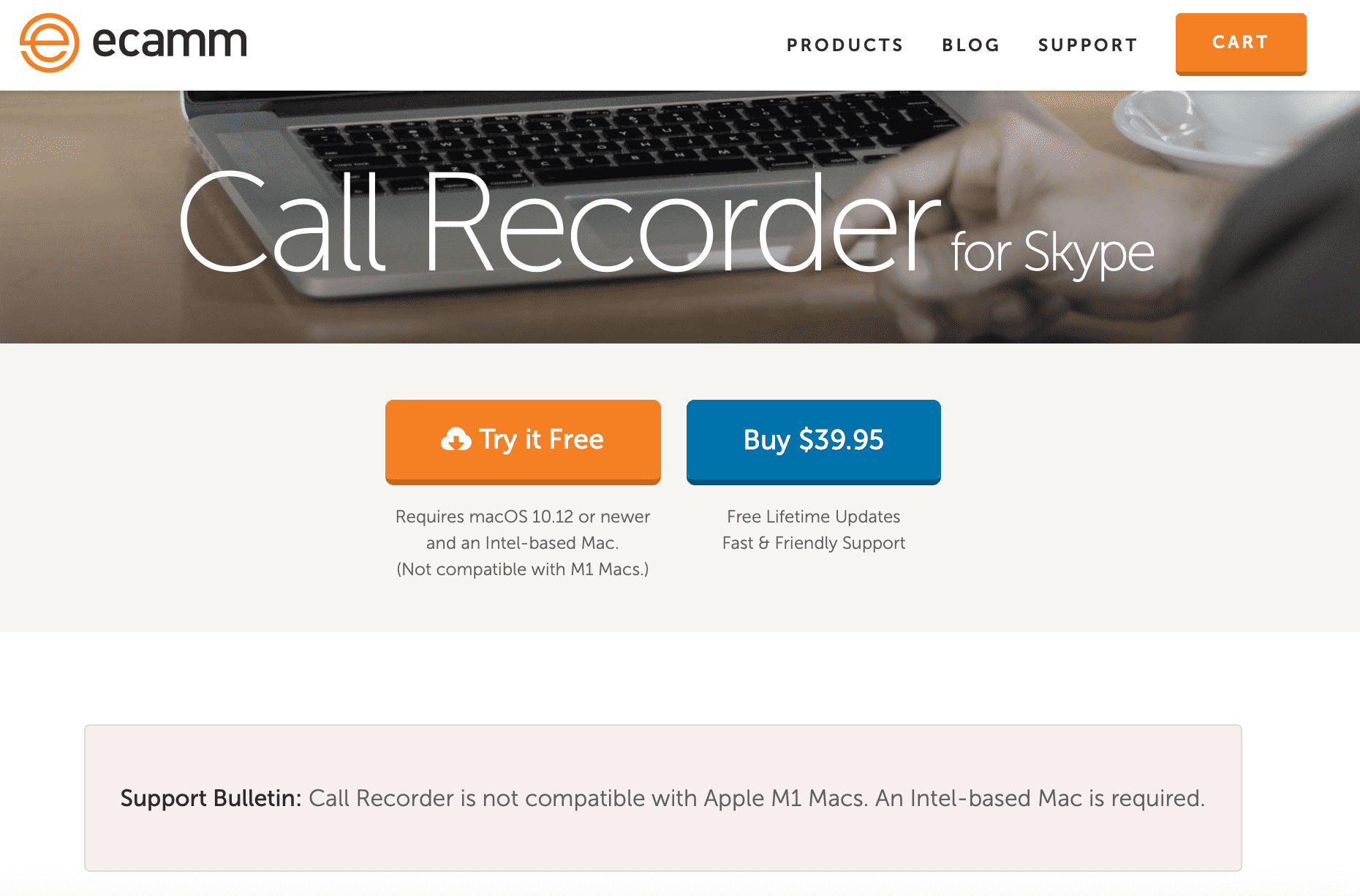Interview: Kaoru Watanabe talks Japanese etiquette, studying, teaching, and performing

photo by Max Whittaker
I recently had the pleasure of talking with Kaoru Watanabe, a friend and wonderful musician based in New York. We first met while I was living in Honolulu and playing with the Kenny Endo Taiko Ensemble. Kaoru and I have performed together in a variety of configurations over the years and I always have a fantastic time. I especially appreciate his musical openness and keen ear which constantly kindle spontaneity and real interaction on stage as we improvise. Kaoru, like myself, is all about the music, and I think this philosophical bond can be heard in our conversation.
For this interview, I asked Kaoru about etiquette in Japanese culture and more specifically within traditional arts. My interest in this topic has grown as I learn more about 礼儀作法 (reigi sahou, or etiquette system) through my Edo Bayashi studies with Kyosuke Suzuki sensei. At the beginning of the interview, I mention Suzuki sensei’s video interviews I produced for the Online Edo Bayashi Gathering in February 2021. Here is the link where you can find three videos dedicated to this topic:
https://vimeo.com/showcase/7974529
As I had anticipated, Kaoru shared valuable insights he gained through a wealth of experiences in the US and Japan. I can relate to his fluency in both cultures so it felt easy and natural to conduct the interview. The included music are excerpts from three of Kaoru’s pieces: Merge, Shinobu, and Bloodlines. I am grateful to Kaoru for his time and look forward to the next time we can record another interview on a different topic.
Website
http://www.watanabekaoru.com
Youtube channel
https://www.youtube.com/channel/UCfBL_1I2mRPcVK2gvyRAeNA
Instagram
https://www.instagram.com/kaorufue/
Kaoru Watanabe Taiko Center
http://www.taikonyc.com
Kaoru Watanabe, a New York-based composer and musician specializing in Japanese flutes and percussion, works with such groundbreaking artists as Laurie Anderson, Mikhail Baryshnikov, Yo-Yo Ma, Wes Anderson, Bando Tamasaburo, Simone Leigh, and Jason Moran. Watanabe is known for the artful and innovative ways he merges traditional Japanese music and theater elements with the contemporary Western world.
Originally from St. Louis, MO, where his parents played in the St. Louis Symphony Orchestra, Watanabe played classical music as a child before going to the Manhattan School of Music to study jazz flute and saxophone. He then spent a decade in Japan, re-discovering and diving deep into his cultural roots as a member of the iconic taiko drumming ensemble Kodo. Watanabe studied a wide variety of traditional Japanese folk dances, songs, drumming, Noh, Kyogen, tea ceremony, woodworking, and rice farming to deepen his understanding of Japanese culture and the function and place of the performing arts within it.
As a solo artist, Watanabe seeks to collaborate with artists who embrace both tradition and innovation, such as Eva Yerbabuena, Imani Uzuri, Tamangoh, Adam Rudolph, Alicia Hall Moran, Rhiannon Giddens, Jen Shyu, Susie Ibara, Hassan Hakmoun, Zakir Hussein, Gamin, Vernon Reid, Wu Man, Tseyen Tserendorj, and many others.
As a composer, Watanabe writes for various, often unconventional instrumentations and explores a wide variety of compositional techniques. He has written orchestral works for the Sydney Symphony, premiering them at the Sydney Opera House. Watanabe composed music for the Academy Award-nominated Isle of Dogs soundtrack and three separate commissions for Yo-Yo Ma's Silkroad ensemble. Watanabe's compositions often explore social justice, politics, history, and heritage. He has written a piece called Iki, meaning "breath," a mantra-like performance-art piece for Eric Garner. Watanabe has written for prepared koto about the Japanese fighter planes used in WWII, a symbol of both the beauty and genius of Japanese culture and the evil and destruction it perpetrated. During the pandemic, Watanabe developed a body of work that uses electronics to sample and playback his flutes, drums, and voice live, allowing him to create ensemble works solo that he titled INCENSE.






































































